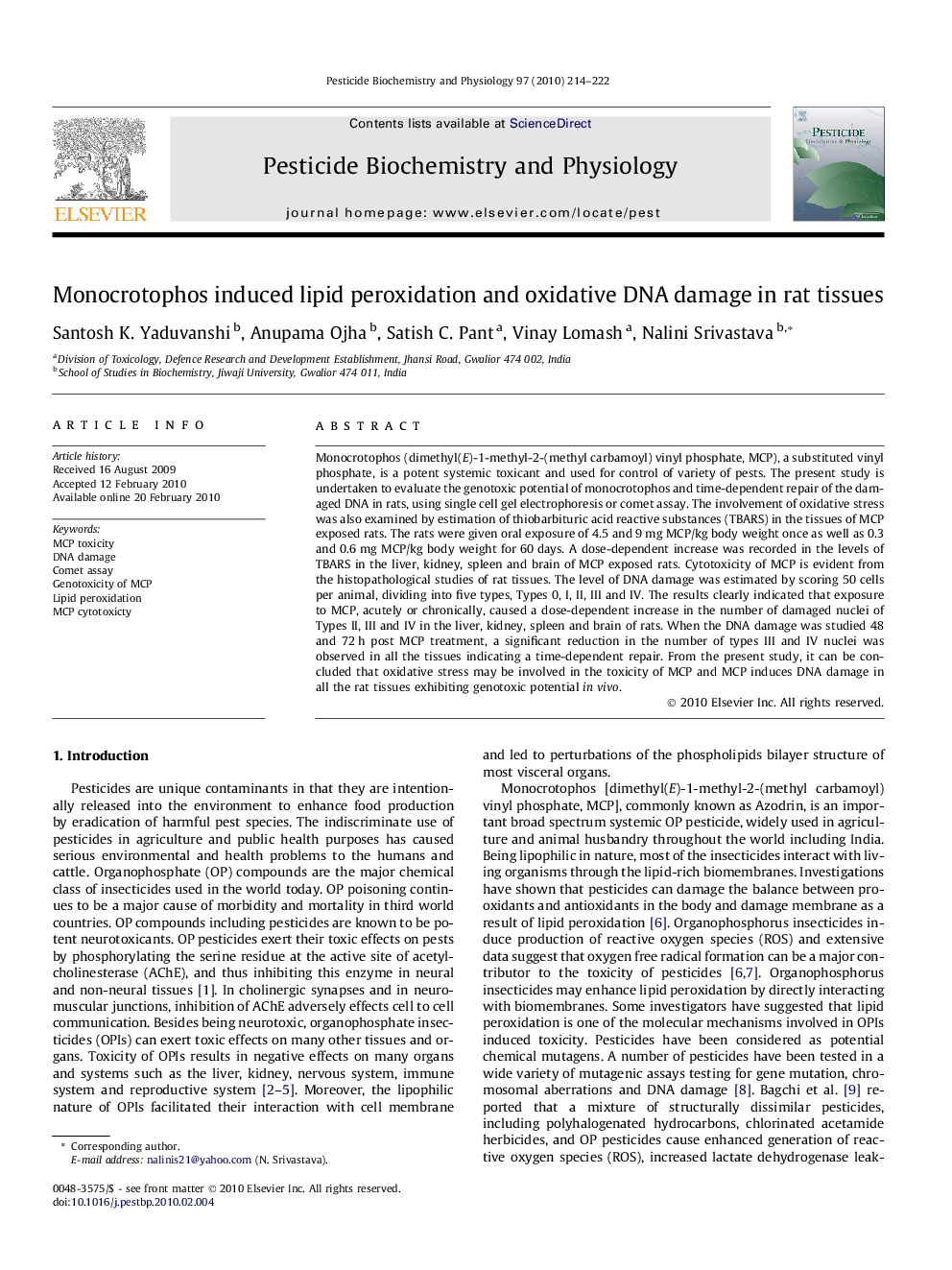| Article ID | Journal | Published Year | Pages | File Type |
|---|---|---|---|---|
| 2009631 | Pesticide Biochemistry and Physiology | 2010 | 9 Pages |
Monocrotophos (dimethyl(E)-1-methyl-2-(methyl carbamoyl) vinyl phosphate, MCP), a substituted vinyl phosphate, is a potent systemic toxicant and used for control of variety of pests. The present study is undertaken to evaluate the genotoxic potential of monocrotophos and time-dependent repair of the damaged DNA in rats, using single cell gel electrophoresis or comet assay. The involvement of oxidative stress was also examined by estimation of thiobarbituric acid reactive substances (TBARS) in the tissues of MCP exposed rats. The rats were given oral exposure of 4.5 and 9 mg MCP/kg body weight once as well as 0.3 and 0.6 mg MCP/kg body weight for 60 days. A dose-dependent increase was recorded in the levels of TBARS in the liver, kidney, spleen and brain of MCP exposed rats. Cytotoxicity of MCP is evident from the histopathological studies of rat tissues. The level of DNA damage was estimated by scoring 50 cells per animal, dividing into five types, Types 0, I, II, III and IV. The results clearly indicated that exposure to MCP, acutely or chronically, caused a dose-dependent increase in the number of damaged nuclei of Types II, III and IV in the liver, kidney, spleen and brain of rats. When the DNA damage was studied 48 and 72 h post MCP treatment, a significant reduction in the number of types III and IV nuclei was observed in all the tissues indicating a time-dependent repair. From the present study, it can be concluded that oxidative stress may be involved in the toxicity of MCP and MCP induces DNA damage in all the rat tissues exhibiting genotoxic potential in vivo.
